BURBERRY: Digital Experience App
Role
Concept, research, user interviews, wireframing, prototyping
Duration
October 2016 - June 2017
Burberry website
Brief
I love Burberry as a fashion house—the design of their handbags and clothing and their preppy image resonate with myself personally. I’m also a customer of Burberry, and it was through my pre-purchasing research in early 2016 that led me to discover that there was no app, and their website (at the time) wasn’t responsive.
I thought it was strange at the time that one of the largest luxury brands, especially one that is currently targeting a millennial market, had no official app that supports an omni-channel experience.
Challenge
In order to create a digital experience for Burberry, I was tasked with the following objectives:
From the company’s end, the Burberry digital experience lets users learn more about their products and supports the following business objectives:
- Enable users to browse products
- Enable users to purchase a selection of products
From the user’s end, the Burberry digital experience needs to fulfill:
- Symbolic, experiential, and functional perceptions
Initial Approach
I naturally began my research on the internet and conversely, into other fashion houses (e.g. Louis Vuitton, Prada, etc). Some fashion houses, such as Cartier and Louis Vuitton, have digital experiences but many of them do not.
Below is an infographic that summates my findings:

During my research for the brands that have a mobile digital experience, I noticed that more expensive items tend to point the consumer towards an in-store purchase, or it just displays the price and doesn’t provide an option to purchase it directly off the app.
However, some of the less expensive items (e.g. a small handbag with a price tag in the $2000 range) can be purchased directly off the mobile app.
The disparity in purchasing in-store and off an app began my research on purchasing patterns for luxury items.
Purchasing Patterns for Luxury Items
I examined a number of articles and books that examined specifically on buying patterns for luxury items, some of which are not only dependant on age, but on culture as well.
For example, Indonesian consumers value the experiential value of shopping in-store, whereas North American consumers may be driven more by self-esteem and social acceptance. More interestingly is the growing base for luxury consumers being rooted in China, India, and Indonesia, compared to relatively stable consumer bases in North America, Europe, and Japan.
Keeping these points in mind and the explosive growth in omni-channel shopping experiences, my research also showed me that, despite these trends, luxury brands are slow to adapt for reasons such as:
- Luxury goods are accompanied by heritage and traditional storytelling, both of which are antithetical to innovation, technology and efficiency
- Luxury goods are based around qualitative and experiential value, whereas online is based around transactional value
- For existing consumers of luxury goods, a personalized experience where one can get to know the consumer is what builds the relationship between the consumer and retailer
Luxury shopping experiences differs from non-luxury shopping experiences due to the presence of symbolic, experiential, and functional values. My research, as well as a survey from family and friends who have had aspirations to own a luxury item have led me to some of the following responses:
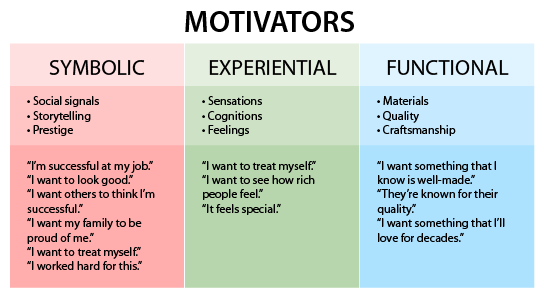
Using these responses as a starting point, I conducted in-person interviews with family and friends on their thoughts and actions during a shopping experience at a luxury retailer. At the same time, I also comparing my collected data against pre-existing reports and articles on motivators during the shopping experience for a fuller picture.
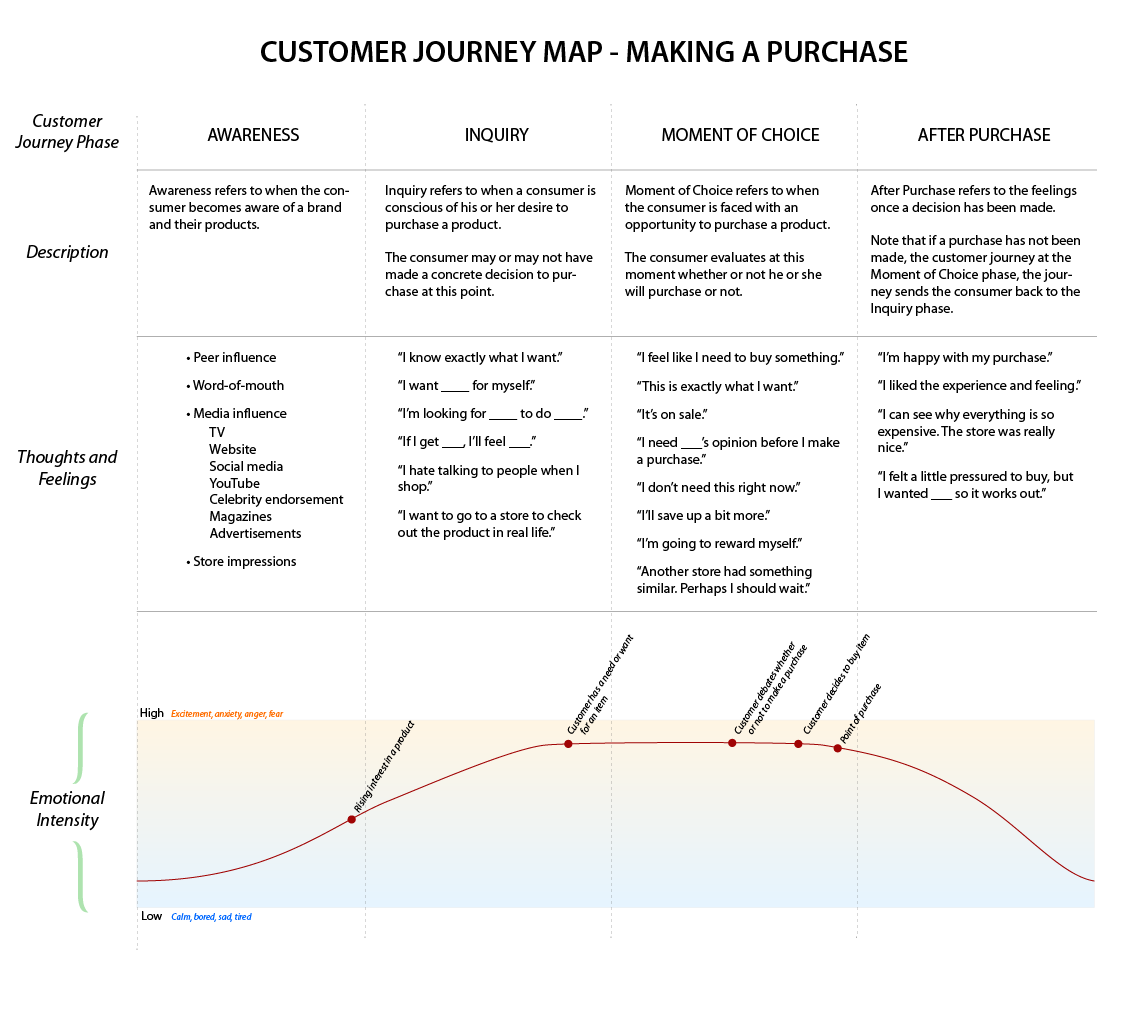
Researching a product occurs online in most cases according to my collected data, sometimes occurring multiple times over a duration leading up to the moment of choice, even happening again after an in-store visit has been made.
Determining a Strategy for a Seamless Digital Experience
My research and interviews have led me to believe that a digital experience for a luxury brand mainly serves to create awareness of a brand’s products to a customer, in addition to informing the customer of prices, product attributes, and in-store locations for that particular product.
Keeping these points in mind, I created wireframes that illustrate what that digital experience may look like for Burberry.
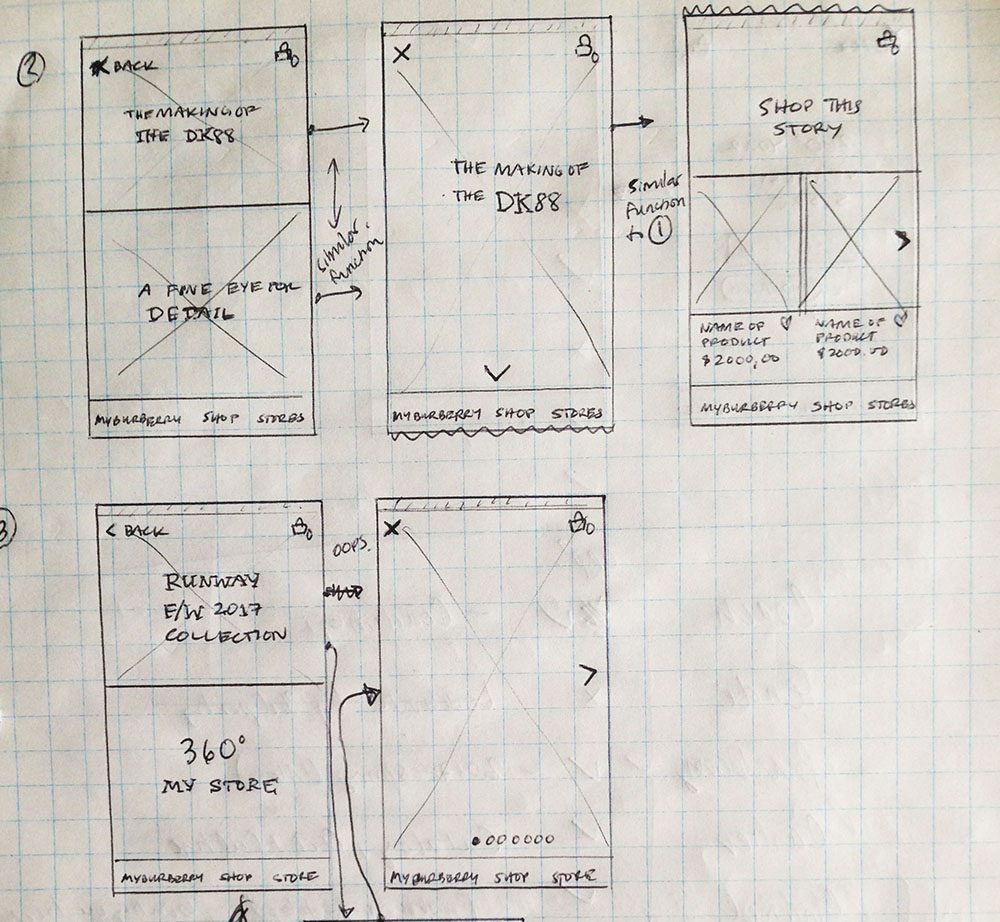
An early prototype was built using Adobe XD as opposed to other tools I'm familiar with, such as Axure RP. This was deliberately done in order to mimic a past real-world situation where I was requested to build a digital product using a new tool without additional time allocated for learning how to use it.
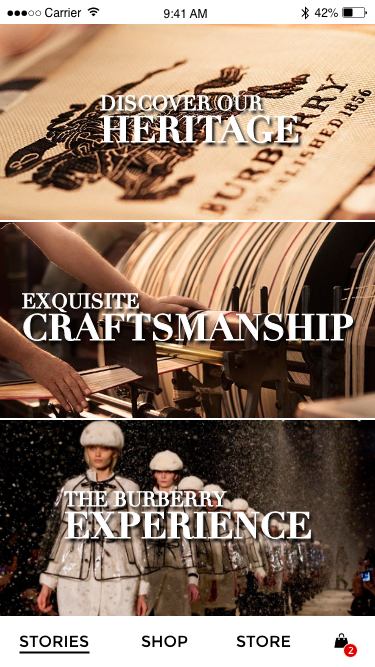

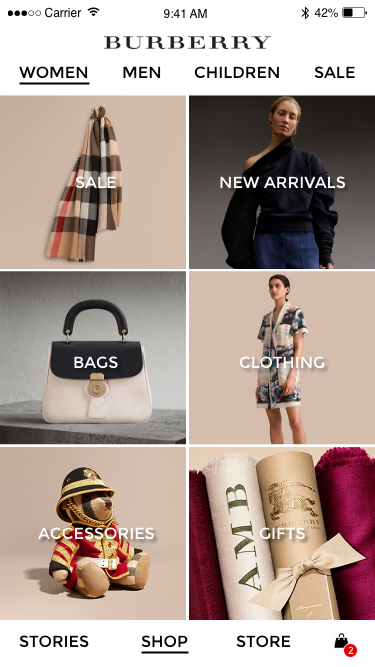
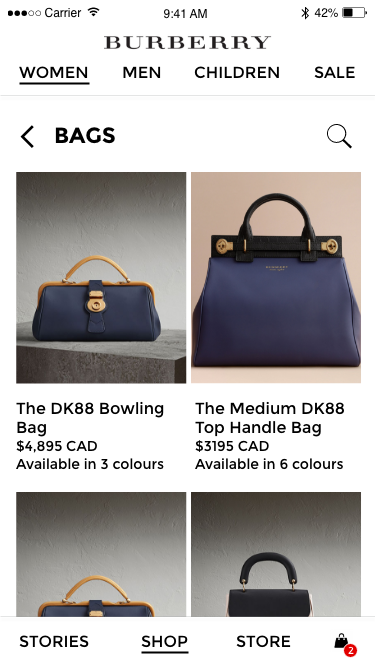
According to my research, there's a perception for luxury brands to provide an experiential value that helps differentiate it from non-luxury brands. Burberry's reputation amongst other luxury brands is that of an innovator, in that it adopts technology more readily as a storytelling tool. Some of the past innovations the company has incorporated are VR headsets for consumers to virtually attend their fashions shows. Burberry in Asia has incorporated branded e-greeting cards for Lunar New Year celebrations.
I've looked into other well-known luxury brands for their digital experiences, and they range from activity trackers for their watches, emojis, fashion tutorials, and catalogs, but there doesn't seem to be a standard or common expectation. However, Burberry's current target is towards millennials, so I looked back on my earlier research, as well as the three motivators for luxury purchases (symbolic, experiential, and functional values), to examine tools and features that appeal towards millennial consumers.
Chat and microblogging apps are more popular amongst millennials over time as opposed to social networks, so I based the features around that. Emojis were more aligned with luxury brands that have a more daring image, and felt that that didn't fit Burberry's more conservative image. I then decided on having 360º views for their newer products, as one of the common themes in my independent research indicated that consumers of luxury brands examined photos on websites and forums, and also conducted visits to the store for more information on the product before purchasing. Incorporating this feature fulfills the experiential motivator.
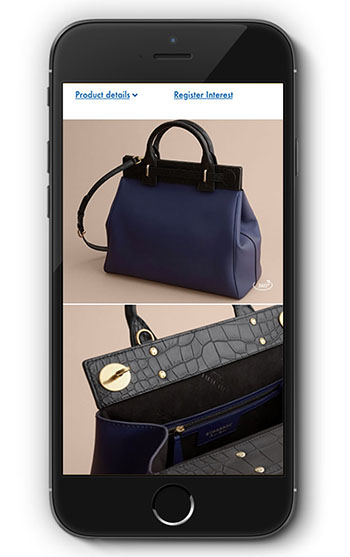
Feature articles that focused on the craftsmanship was added, not only to appeal to Burberry's older target market and Asian consumers, but also to provide storytelling behind each product line. Robust storytelling methods, such as videos, were also incorporated as well. These considerations were made with the functional motivator in mind.
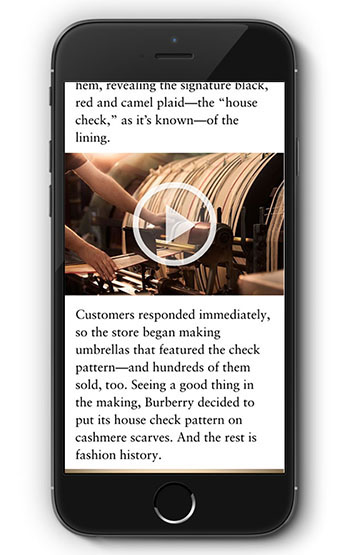
The last motivator was symbolic, and though luxury brands are often used as status indicators, I wanted to focus on Burberry's existing products that can be given as gifts, such as their monogramming service, scarves and small accessories.
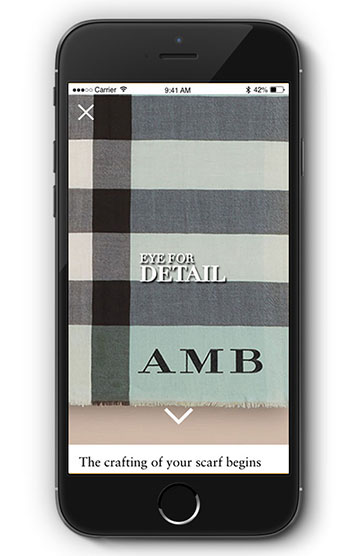
Prototype
Please feel free to contact me directly for a demonstration of the digital experience app. A download link for an interactive, high-fidelity prototype can also be provided upon request.
Final Thoughts and Lessons Learned
Due to this being a passion project, one of the challenges I realized early on was how difficult it was to define the problem. I knew, in a general sense, that there was no official digital experience at the start of this project, but it was difficult to find the justification for building an app that not only served as an eCommerce platform, but held an additional purpose for consumers. I found that my experience working with Walmart was a great help, drawing on the importance of having digital products supporting a main business objective.
I also approached this project very differently from past UX projects, namely that I gave myself an additional challenge of working with a new tool in a relatively tight timeframe. Again, my corporate retail background gave me familiarity in regards to how quickly the business moves, and I felt it was important to have a constraint of some kind. The total amount of time I gave myself to learn this tool half a day, or four hours, which is directly reflective of my experience at Walmart. Eventually I'd like to conduct user testing to examine the reception to the app and validate my design decisions, as well as building a tablet version of the app.
My final thought on this is that, though I built this digital experience app based on North American buying habits, a digital experience app for Asian consumers would likely round out the digital strategy for Burberry. North American, European, and Japanese markets are relatively mature and stable; however my research has indicated that a growing market in Asia (notably China, Indonesia, and India) will require a slightly different approach. However, it is likely for me to continue with building with a more global strategy in mind, I would need to involve or partner with others who are able to assist in conducting the independent research needed for mobile buying habits.

